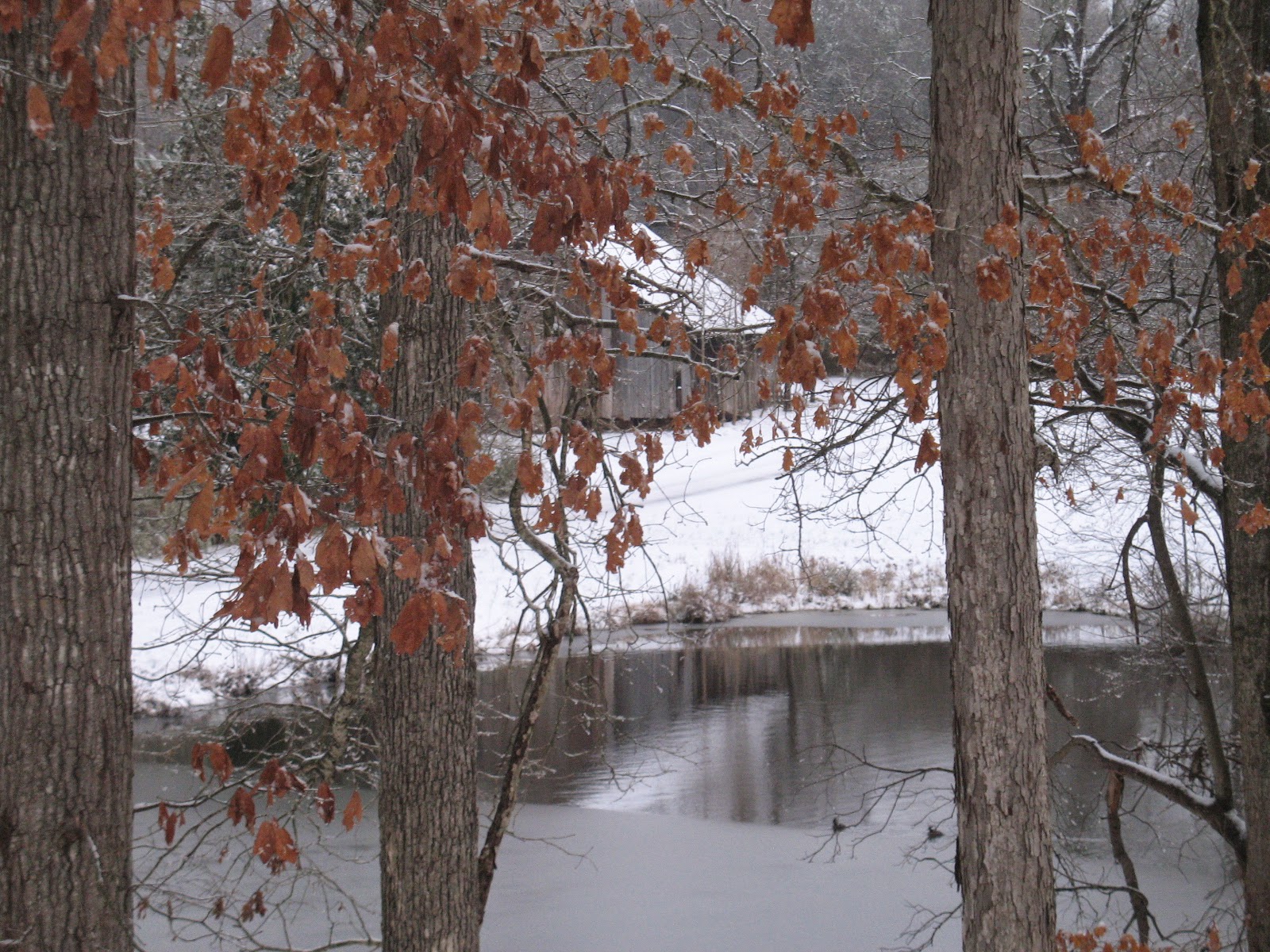Yes, there is mud.
But, not the good kind, not the kind that we like to toss on the wheel. There is the slippery mud. The good old Carolina red mud.
When we get the out of state visitors in the store they will ask us if the red mud that they see everywhere is the same mud we make our pottery from.
The short answer is no.
That red clay that you see is good for one thing and one thing only, it likes to cake to the bottom of your shoes or tires and let you just "carry" it with you to the house or to the road. When bringing that wonderful Carolina red "mud" into the house it will then make its way into the rest of your life.
If you don't leave those shoes at the door, you can have Carolina red floors, rugs, furniture, just about everything it comes in contact with.
Do we make pottery from mud.
No, we make pottery from clay.
And, clay is not mud.
From Wikipedia:
Clay is a fine-grained natural rock or soil material that combines one or more clay minerals with traces of metal oxides and organic matter. Clays are plastic due to their water content and become hard, brittle and non–plastic upon drying or firing. Geologic clay deposits are mostly composed of phyllosilicate minerals containing variable amounts of water trapped in the mineral structure. Depending on the content of the soil, clay can appear in various colors, from white to dull gray or brown to a deep orange-red.
Yes, I know the real information is not interesting to all of the people that like to think we just dig up our back yards in order to make things. For the most part we do not dig up our yards, but if we could, would we?
There is a lot of work that goes into creating a good clay body. If you are one of those lucky folks that stumbles on a bed of clay that is perfect for throwing and firing you are a very lucky person indeed.
Most clays need something else added to make them work.
Mark and I use a high quality commercial blend, that works for us.
There are potters today who are experimenting with local or native clay in their areas.
We are of the mind that this is one of those steps that we don't want to do.
We also know many of the children of the older generation of potters. Many of those people had the job of digging and processing the clay for the family business. They use to tell me about how hard the work was and that they would rather eat off a paper plate. It made me laugh, still does.
At school we mix our clay.
I spend at least twice a week with the help of my work study student processing clay for the classes.
It is an interesting job. It has made me think about the clay I use at home and the clay I make at school.
I think it is good to have to at least learn how to mix a clay body, knowing what it needs to do, and learning about all the things that you want it to do.
Does it make me want to mix our own here?
No.
 |
Spring is coming, it has to.




9 comments:
I agree with you! I would rather spend time making pots than making clay. Nothing better then a fresh bag from the clay supplier.
Mud, mud, mud, mud, mud, and more mud. Guess we now have a mud season in NC too.
Mud season comes too many times a year.
When I was teaching, I took one of my classes to visit a commercial nursery. One of the students asked the owner where they got their dirt for the plants. She replied, Honey, dirt is what you sweep up off the floor. We use soil. Then there is the Gillian Welch song that goes "It's mud in the spring and it's dust in the summer. It rolls in a crimson tide. Til the trees and the leaves and the cows are the color of the dust on the mountainside." Have a good week.
I've seen that hard work, mixing clay, nope, not for me!
I used to come back home to the beach from a two week stay with cousins in Asheboro every summer and my mom couldn't get over all that red clay embedded in the knees of my jeans and my converse tennis shoes. We only had sand, I loved that red dirt, still do.
Mixing clay is also such a dangerous, dusty business, whatta mess. Gorgeous pots of yours here :)
The chemistry of a good clay body is very interesting stuff. I’d like to learn more about it but I’m really happy to have someone more qualified do the mixing.
Well, yes, it is hard work, but I like my red mountain dirt. It's special to me. it's everywhere, but not for everyone.
I love reading all the comments from potters and sheepishly will add that this flute player and teacher thinks that your students absolutely should learn about processing and making their own clay. Down the road when they are successful potters they can choose to make their own or buy it from a good source. But learn about it? Absolutely. Glad you're teaching them. They're lucky students!
Post a Comment